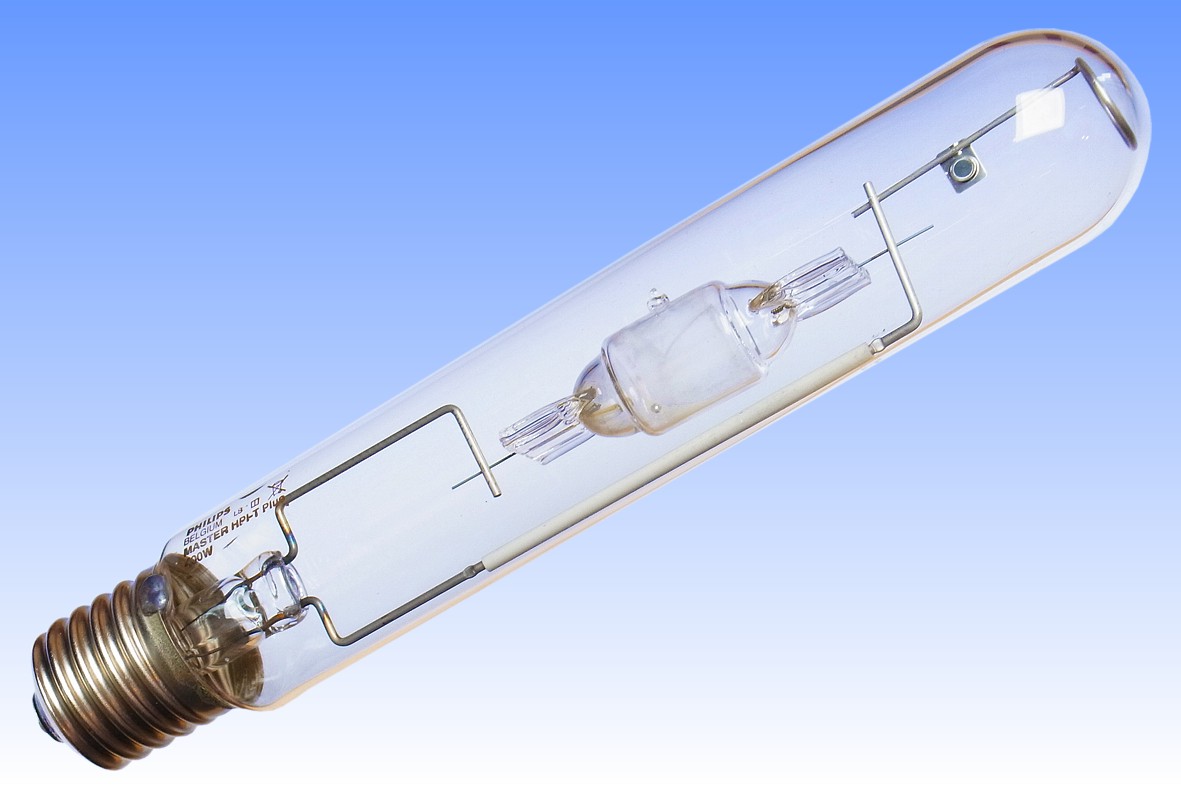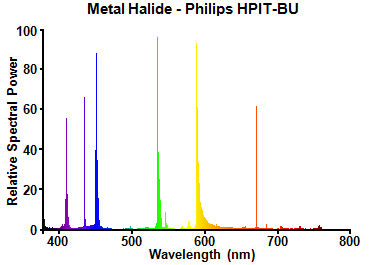
|
Philips HPI-T PLUS Base-Up 400W |

Since horizontal lamps are generally employed in industrial low-bay or floodlighting luminaires, where optical control is important, they are equipped with tubular clear outer bulbs. Meanwhile, vertical lamps are usually found in high-bay luminaires where a large light source is beneficial in achieving uniform illuminance and reducing glare, so these arc tubes are mounted in ellipsoidal bulbs having a diffuse coating. This particular lamp is unusual in that it contains the -BU arc tube within a tubular clear outer bulb.
The original -BU arc tubes were sensitive to salt condensation behind the lower electrode, which could lead to corrosion and premature failures - to avoid this a zirconium oxide coating was applied behind only the lower electrode. This lamp is a relatively modern design that has been optimised such that the heat-reflector could be dispensed with. As such it can be operated equally well either Base-Up or Base-Down. Although the arc tube has been optimised for use on mercury ballasts, this 'Plus' variant can also operate on sodium gear, with higher flux and lower CCT, and also reduced life. The electrodes are much smaller than in earlier models, and note also the double laser-weld to the molybdenum sealing foil.




| Manufacturer: | NV Philips Gloeilampenfabrieken | |
| Lamp Power: | 390 Watts | |
| Lamp Current: | 3.4 Amps | |
| Lamp Voltage: | 125 Volts | 700V Ignition |
| Cap Type: | E40s/45 | Ni plated brass + vitrite |
| Bulb Type: | T-46 | T-16 in eighths/inch |
| Bulb Finish: | Clear | Borosilicate glass |
| Electrodes: | Double Coil Tungsten | Radioactive ThO2 emitter |
| Arc Length: | 38.0 mm | 1 1/2 inches |
| Atmosphere: | (Na,In,Tl)Ix, Hg | Ne-0.5%Ar | Outer: Ne-40%N2 |
| Luminous Flux: | 33,000 lm (@ 100hrs) | |
| Luminous Efficacy: | 84.6 lm/W (@ 100hrs) | |
| Colour Temperature & CRI: | CCT: 4500K | CRI: Ra 65 |
| Chromaticity Co-ordinates: | CCx: 0.377 | CCy: 0.386 |
| Rated Lifetime: | Not published | |
| Warm-up & Re-strike time: | 3 minutes | 5 minutes |
| Burning Position: | Vertical ± 20° | |
| Overall Length: | 275 ± 8 mm | 11 inches |
| Light Centre Length: | N/A | |
| Factory: | Turnhout | Belgium |
| Date of Manufacture: | November 2008 | Date Code L8 |
| Original / Present Value: | ||
